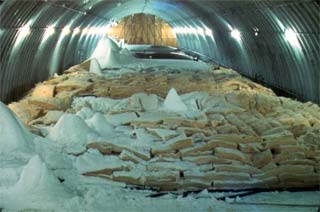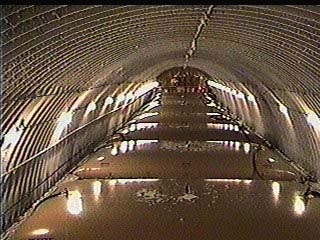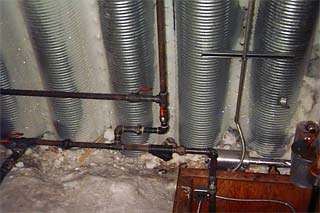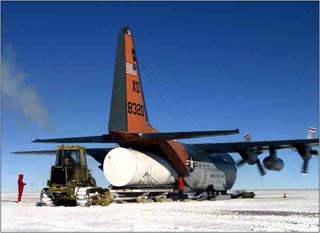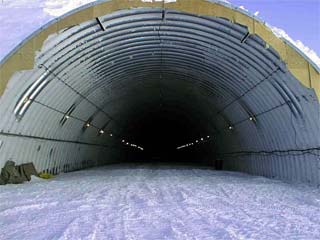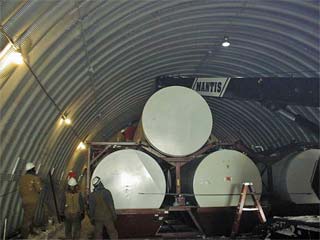1998-99 Photos - Fuel Arch Upgrade
 One of two big projects in the 1998-99 summer--replacing 9 25,000 gallon fuel bladders with 45 10,000 gallon steel tanks. The purpose was twofold--one being that the new elevated station and its associated science would be much thirstier for fuel than the domed station, and the other being to eliminate fuel loss...(NSF). | |
| Above, two older views of the bladders in the fuel arch--on the left in 1977, two of the bladders are covered with electric heat blankets to keep the fuel from gelling. In these days the arch was not buried, so temps inside the arch matched those outside. Originally there was a snow dike at the downwind end of the arch--thought necessary to keep a fuel spill from flooding the station. I was standing on top of it when I took the photo at left. The dike disappeared sometime after 1977 as seen from the photos below. Another problem with the arch not being buried is that lots of snow leaked in through minute crevices and holes in the arch. It all had to be hauled out the doors at the end of the arch on sleds. The right photo shows one of the problems with the heat blankets--in 1982 one of the bladders caught fire, perhaps because the electrical wiring insulation became brittle and things shorted out. Most of the fuel just leaked away and only the one bladder was lost. Here's another view (both of these photos from RW). A few winters later (1989) about 40,000 gallons mysteriously disappeared through a small leak in the piping. The loss wasn't discovered for a couple of months until the bladders were physically measured, and the leak wasn't located until summer. | |
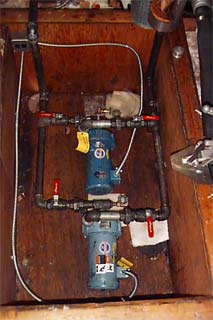 Two closeup shots of the piping system and pumps in a heated box--this small system would be replaced by the large new pumphouse building (CR). |
|
Continue on...only 40 more tanks to go... |
|
